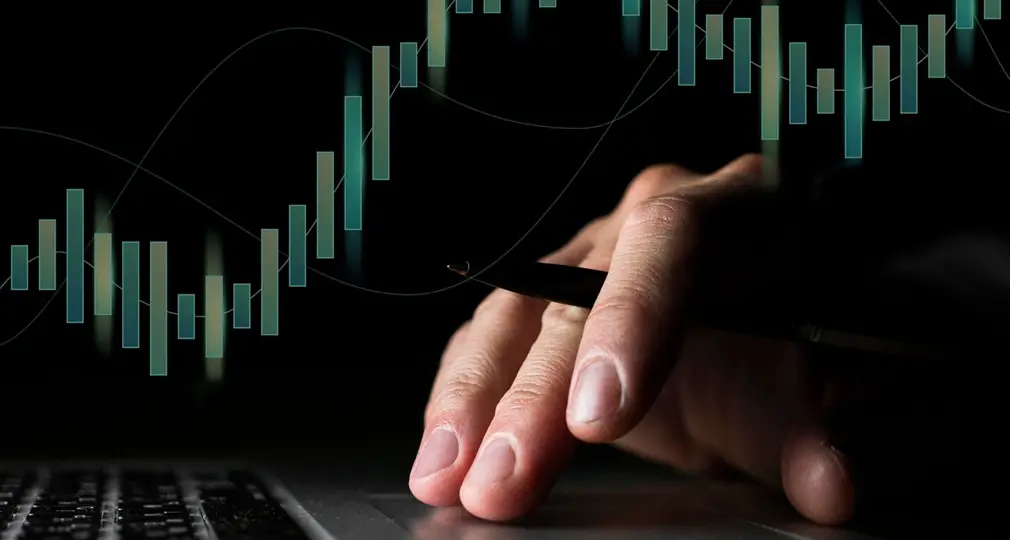Futures is a widely known term in the financial markets with many specifics that should be carefully explained. Among the most important issues is the role of futures in the stock exchange markets. Login Casino continues following the latest financial news along with revealing the most exciting and intricate topics in the economic sector, explaining now the fundamental aspects of futures.
Explaining futures in simple words
The word ‘futures’ appeared on the basis of ‘future’ and is also tightly related to the upcoming events. Futures are the specific financial contracts that guarantee the fixed price for a particular good at the exact date. In other words, futures are the contracts that allow two sides to plan the precise data and price of the future deal.
For instance, the bakery firm wants to plan its financial balance for the next year, but wheat price fluctuations can significantly influence the final sheet. In order to guarantee a positive balance, such a firm can sign the futures contract with the farmer or agricultural corporation about the supply details. In such a deal, both sides usually agree on the average price for wheat that must be adhered to in a year or so. As nobody can precisely forecast the price for wheat for the next year due to unpredictable environmental conditions, the futures contract allows both sides to be sure that the deal will be accomplished.
If the following year is appropriate for agricultural production, wheat will probably cost lower than the average rate. In this case, the farming organization will count profits. If the next year is disastrous for wheat production, the wheat price will be higher than average. In this case, the wheat producer is obliged to supply the product for a lower price and will suffer financially.
For the bakery firm, the situation also has two possible outcomes (excluding price fluctuations absence) that depend on wheat production. If the next season is good for agriculture, the firm will actually buy the overpriced product. However, if the following 12 months are inappropriate for farming, the bakery will save enough money by buying wheat for lower costs.
What are futures in stocks & commodities? What is the difference?
However, that is only the tip of the iceberg related to understanding futures. There are many types of futures contracts, and most of them are not related to commodities. Thus, the most notable ones are:
- futures for commodities (oil, natural gas, wheat, corn, etc.);
- futures for stock indexes (Dow Jones Industrial Average, S&P 500, NASDAQ-100);
- futures for currencies (the most widespread are a dollar, euro, and pound);
- futures for precious metals (gold, silver, platinum);
- futures for national bonds of diverse countries.
The development of stock exchange markets and shares’ trade transformed this type of securities into a commercial instrument. Even though futures appeared as the reaction to the instability of the market and price fluctuations of real goods, they are now widely used similarly to shares and traded on the exchanges.
Futures vs. stocks – the principal disparity
Nevertheless, one has to understand the principle difference between stocks and futures. Shares are the financial equivalent of a particular firm or product, which can rise or downfall with time. Futures are the hedge contracts that guarantee the details of the future deal.
Thus, stocks exist in the exchange markets as the investing item, which also allows the firm that has made the initial public proposition to receive real money for selling part of their company. The shareholder can directly influence the firm’s strategy and receive dividends if the company is growing and developing.
Futures appeared as the reaction to the price fluctuations and unpredictability of the upcoming situation. It means that this kind of securities is more predisposed to react to the changes, making them much more sensitive to every news in the appropriate sector.
Even though both kinds of securities can bring profit in the future, shares are more long-oriented compared to futures. In practice, it means that the shareholder doesn’t need to check the stocks’ fluctuations every hour or every day as changes are more smooth and can be better measured in weeks or even months. On the contrary, futures are more active in terms of fluctuations, and its owner can make money a few times per day trading the same futures.
The role of futures in stocks’ markets
Although futures are often traded on the exchanges just like shares, their role is way broader. Having the unique possibility to react to the news with quite significant fluctuations, futures are interesting trading instruments. This fact is tightly related to the speculations, which is one of the ways to change the price of the futures for short terms and trade them for profit.
Being also a hedging instrument, futures can often be used to protect other securities. It brought us to the term’ stock futures,’ where stocks can be regarded as the commodity itself. As shares’ prices also change with time, stock futures can be easily applied to avoid too sharp fluctuations.
However, one has to clearly understand that buying securities, shares, and stock futures are three quite distinct procedures with different properties and outcomes. To make a bit clearer, look at the table below:
| Shares | Futures | Stock futures | |
| Value | One owns the part of the company or product | Obligation to buy/sell a product with a fixed price in future | Obligation to buy/sell shares with a fixed price in future |
| The pace of price change | Slow | Middle | Fast |
| The amount of start investments | Big | – | Small |
| What does fluctuation mean? | Company/product is losing/increasing value | The forecast for the product price is changing | 1. Price of the shares is changing2. Someone speculates in the stock market |
| Advantages | 1. One owns part of a real company or product, can have voting power.2. One can receive dividends if the company grows.3. Stability and liquidity. | 1. Buyer/seller can plan future spends/incomes.2. Reduced/hedged risks.3. Can be traded.4. Low transaction fees.5. High Liquidity. | 1. Significant leveraging (buy on margin).2. Possibility to speculate and change price rapidly.3. Actual hedging instrument for shares.4. Low transaction fees.5. Actual indicator for stock exchanges. |
| Drawbacks | 1. High risk of losing money.2. The success/failure depends on third-party persons.3. Long return period.4. Someone can build the company/product similar to the one you have invested in. | 1. No control over future conditions.2. Expiration time pressure.3. Drops below margin can force unpredictable additional investments. | 1. High speculation risks.2. Margin calls.3. Possibility to lose even more than was invested.4. A bit of a weird investment method for newcomers in trading. |
There are a few aspects of the stock shares that should be highlighted in order to understand this topic better. Thus, hedging of the stocks by futures is one of the primary intentions, which also gives the possibility to speculate and change the prices faster. For traditional stocks, price changes are more a long-term procedure with a weaker opportunity to influence their cost.
Another notable element that requires additional explanation is buying on margin. That is a rather tricky financial operation as, in fact, it means that the purchaser pays only 10-20% of the actual cost of the contract. For instance, if the Tesla stocks cost $1000 per share, one with the $10 000 balance can buy 10 shares. However, with the same amount of money, one can buy 100 stocks securities of Tesla due to applying a 10% margin buy.
Such an aspect seems to be illogical as buying 10 shares looks worse than ‘buying the right’ (this is futures’ initial role) to purchase 100 stocks with the same amount of money. However, such a purchase brings additional risks as one can receive a margin call from the broker, which means that stocks futures should be sold or their owner has to invest additionally into this contract. In practice, it leads to the situation that one can lose all the invested money and be in debt. Such a situation is not possible with traditional stocks as the worst outcome is the firm’s bankruptcy, which means that shares cost zero dollars, but you aren’t in debt as well.
How can futures help to determine the future stocks to invest in?
Considering all the advantages and disadvantages of the stock futures, one can determine them as attractive financial instruments only if the person knows how to speculate. The fast reaction to the news in the industry leads to immediate fluctuations in stock futures prices, which is widely used on stock exchanges.
One of the cornerstones of global financial trade is the existence of a huge number of stock exchanges all over the world. However, they are not open 24/7, and brokers cannot spend more than 6,5 hours per day on the particular trade platform. Another fact is that time zones vary significantly, and nobody wants to work at night because some major exchange is open. At the same time, some blockchain shares can be bought in any exchange all over the world but not only on the one where the initial public proposition was made.
As every stock market is dedicated to the time zone it operates in, it leads to the smooth closure of exchanges in the east and opening them in the west. When Asian exchanges are open, American ones have just gone to sleep, while the European ones are preparing to start their workday. This natural difference led to the creation of three major time zones – Asia, Europe, and America. Logically, traders in diverse parts of the world are looking at the financial situation in different ways, which is represented in the fluctuation of the shares and especially stocks futures.
All this lead to the situation when a broker enters the exchange in the morning, he or she can see a significant gap between the closure prices and opening ones. This difference is the outcome of the time zones’ diversity. For instance, if the American broker went to sleep with some esports stock price of $100 per share, he can face the situation that the price of stocks futures changed by 20-30% the next morning. That could be the reaction just to the rumors that Chinese gaming giant Tencent buys another cybersport company in the other part of the world. At the same time, the share price of this esports organization can change only by 2-3%.
Even though such a difference between the fluctuation on the shares price and stock futures costs is huge, the latter is the indicative instruments on exchanges. A broker can look at the changes in stock futures and predict how the shares’ costs will change in the nearest time. Excluding speculations, stocks futures are a brilliant way to predict the future fluctuation of the real stocks faster.
Conclusions
Futures is a vast topic in the financial world, and it probably cannot be described in a single article. Although futures appeared as the reaction to the products’ price instability, they received much wider recognition, and now they are mostly used to hedge stock fluctuations. There are different strategies on how to trade with stock futures, but this is a bit more professional topic and should be described separately.
Read more: Best Gambling Payment Providers














